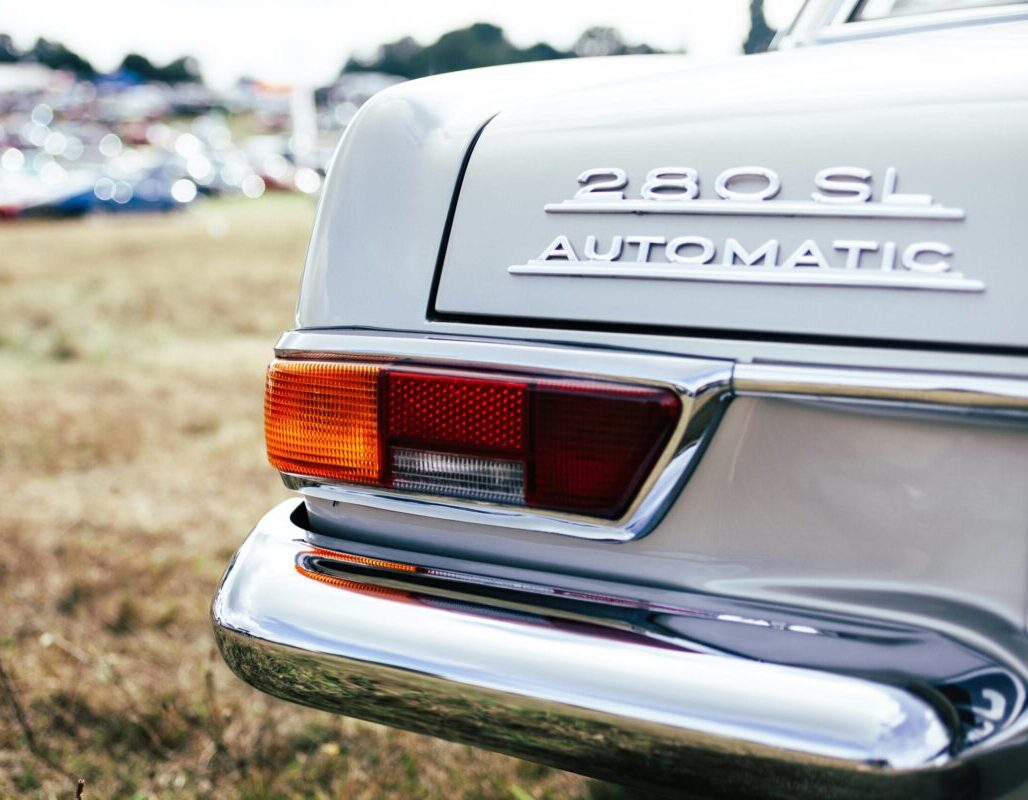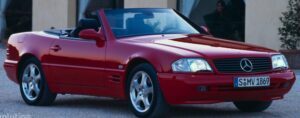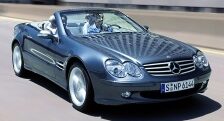ULEZ threatens Classic Mercedes-Benz SL owners: Challenges and solutions
1. London’s low emission zone and classic Mercedes-Benz: Is there a way around it?
2. What is ULEZ and how could it affect You?
3. Why have low emission zones been introduced?
4. Which classic Mercedes-Benz SL are ULEZ compliant?
5. How to avoid the ULEZ charge: Tips for late R129 owners
6. What to do if Your SL doesn’t comply?
7. Conclusion
London’s low emission zone and classic Mercedes-Benz: Is there a way around it?
The introduction of London’s Ultra Low Emission Zone (ULEZ) in 2019 sparked significant debate, especially among car enthusiasts. Designed to improve air quality in the capital, the scheme mandates that vehicles not meeting stringent emissions criteria face a daily charge for driving within the zone. The ULEZ has expanded significantly, and it’s not only Londoners who are affected. Similar schemes are rolling out across the UK, leaving owners of modern classic cars—like the iconic Mercedes-Benz SL—wondering what their options are.
What is ULEZ and how could it affect You?
The ULEZ is essentially a boundary that restricts non-compliant vehicles from driving in much of London without incurring a £12.50 daily fee. As of August 2023, the zone now covers all 32 London boroughs. To avoid the charge, vehicles must meet Euro 4 emissions standards for petrol (introduced in 2006) or Euro 6 for diesel (since 2015). This has left many classic and modern classic car owners, including fans of Mercedes-Benz models, in a bind. With an estimated 700,000 non-compliant cars affected by the expansion, it’s no surprise that many owners have had to make tough decisions—either selling their cars or paying the fee to keep driving in the capital.
Why have low emission zones been introduced?
The primary driver behind the ULEZ is environmental. Cities like London face ongoing challenges with air pollution, which has been linked to serious health issues. In response, governments have introduced low emission zones to encourage cleaner, more efficient vehicles and improve urban air quality. These initiatives aren’t new—emissions standards have been in place since 1970, with regulations growing stricter over time. Euro 4, introduced in 2006, set limits on carbon monoxide, hydrocarbons, and nitrogen oxides in petrol engines, while Euro 6 standards aim to tackle the more harmful emissions from diesel engines.
However, the ULEZ has faced criticism not just for its environmental intentions but also for the substantial revenue it generates. In the first month after the August 2023 expansion, the zone brought in £26 million, with projections reaching £300 million by the end of the year. While the Greater London Authority insists that this revenue will be reinvested into improving public transport, some remain skeptical.
Which classic Mercedes-Benz SL are ULEZ compliant?
For owners of Mercedes-Benz SL models, ULEZ compliance varies significantly depending on the model and year. Mercedes-Benz vehicles, particularly those produced in the late 1990s and early 2000s, often skirt the edge of compliance due to advancements in emission technology even before regulations took full effect.
According to available data:
- The R107 SLs (produced from 1971 to 1989) mostly fall outside ULEZ compliance unless they are registered as ‘historic vehicles’ with the DVLA. Any SL built before 1983 may qualify for this exemption, which rolls forward year by year.
- R129 SLs (1989–2001) present a more complex case. The official line from Mercedes-Benz is that only the 2001 SL 500 is fully compliant, but there are numerous reports of earlier models also meeting the required standards. Some owners have successfully gained exemptions for late-model R129s, such as the 2000 SL 500 and SL 320, by providing evidence of their emissions via a Certificate of Conformity (CoC) from the manufacturer.
The R230 SLs (produced from 2001 to 2012) are fully compliant with the current ULEZ regulations, so owners of these models are in the clear.
How to avoid the ULEZ charge: Tips for late R129 owners
If you own a late-model R129 SL, there may be a way to avoid the ULEZ charge. Many of these cars, particularly those produced after 2000, may actually meet the Euro 4 emissions criteria even if they weren’t officially tested for it at the time. The key is obtaining a Certificate of Conformity from Mercedes-Benz’s homologation department, which provides proof of your vehicle’s emissions output.
For some owners, this process has already paid off. By presenting the CoC to Transport for London (TfL) and demonstrating that their car’s nitrogen oxide (NOx) emissions fall below the ULEZ threshold, they’ve managed to secure exemptions.
What to do if Your SL doesn’t comply?
If your car doesn’t meet ULEZ standards, there are still a few options available. First, check if your car could be eligible for an exemption by securing the appropriate documentation. If this doesn’t work, consider whether storing your vehicle outside the ULEZ area is viable, at least temporarily. Another option is to register older cars as historic vehicles with the DVLA, which could exempt them from the charge.
If none of these solutions apply, it may be time to consider selling or swapping your vehicle for a compliant model. The good news is that if you do decide to sell, the desirability of classic SL models outside of ULEZ areas could make it a lucrative choice, especially as prices for these cars remain strong.
Conclusion
While ULEZ undoubtedly poses challenges for owners of older Mercedes-Benz models, it’s not all doom and gloom. Many cars, even those produced before 2006, may still qualify for exemption with the right paperwork. And for those who aren’t yet compliant, storing your car or registering it as a historic vehicle could provide a workaround.
The ULEZ expansion may have pushed some modern classic SLs out of London, but outside the capital, these cars remain highly valued and loved. With the right steps, it’s possible to continue enjoying your classic Mercedes-Benz without being penalized.
Are you already a proud owner of a Mercedes-Benz? If so, check out our selection of parts for this car at the following link:
https://octoclassic.com/product-category/mercedes-benz
Photos sources: autoevolution.com











